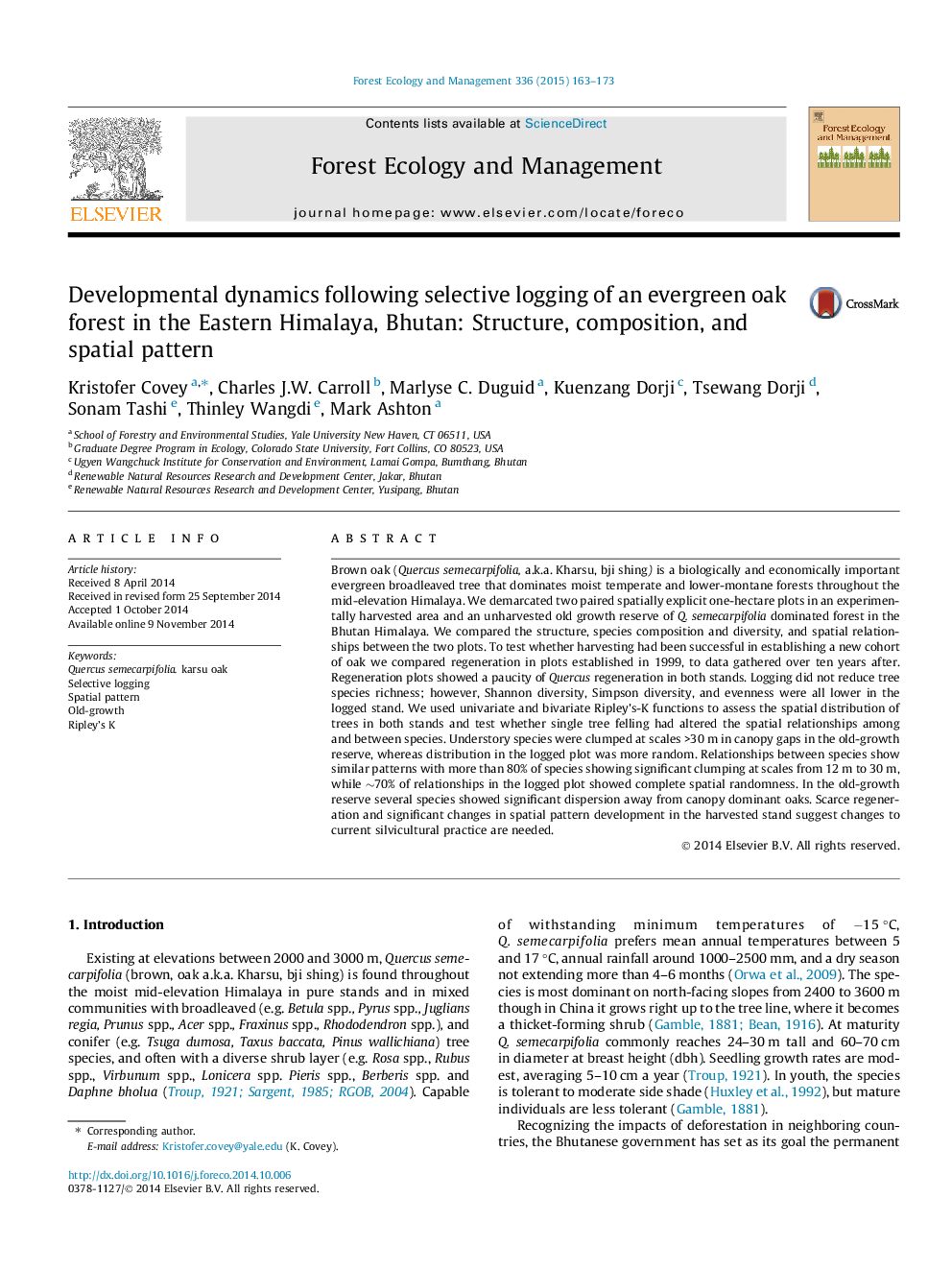| کد مقاله | کد نشریه | سال انتشار | مقاله انگلیسی | نسخه تمام متن |
|---|---|---|---|---|
| 86427 | 159187 | 2015 | 11 صفحه PDF | دانلود رایگان |
• We assess the impact of harvesting in Old Growth Quercus semecarpifolia stands.
• We analyze data from paired harvested vs. reserve 1 ha spatially explicit plots.
• We compare regeneration, species composition, diversity and spatial pattern.
• Under current management, Quercus species are not regenerating in either stand.
Brown oak (Quercus semecarpifolia, a.k.a. Kharsu, bji shing) is a biologically and economically important evergreen broadleaved tree that dominates moist temperate and lower-montane forests throughout the mid-elevation Himalaya. We demarcated two paired spatially explicit one-hectare plots in an experimentally harvested area and an unharvested old growth reserve of Q. semecarpifolia dominated forest in the Bhutan Himalaya. We compared the structure, species composition and diversity, and spatial relationships between the two plots. To test whether harvesting had been successful in establishing a new cohort of oak we compared regeneration in plots established in 1999, to data gathered over ten years after. Regeneration plots showed a paucity of Quercus regeneration in both stands. Logging did not reduce tree species richness; however, Shannon diversity, Simpson diversity, and evenness were all lower in the logged stand. We used univariate and bivariate Ripley’s-K functions to assess the spatial distribution of trees in both stands and test whether single tree felling had altered the spatial relationships among and between species. Understory species were clumped at scales >30 m in canopy gaps in the old-growth reserve, whereas distribution in the logged plot was more random. Relationships between species show similar patterns with more than 80% of species showing significant clumping at scales from 12 m to 30 m, while ∼70% of relationships in the logged plot showed complete spatial randomness. In the old-growth reserve several species showed significant dispersion away from canopy dominant oaks. Scarce regeneration and significant changes in spatial pattern development in the harvested stand suggest changes to current silvicultural practice are needed.
Journal: Forest Ecology and Management - Volume 336, 15 January 2015, Pages 163–173
